Polaris has been using the same basic Hilliard front differential design in all their Rangers and RZRs since 2003. They’ve only made small changes here and there to make it stronger, make it more reliable, or make it fit new models.
Sounds like they’re using some old technology then, right? Maybe it’s time to update?
Here’s the thing: they nailed the design back in 2003. It’s pretty close to perfect. Can-Am has made strides to catch up, but they can’t compete with the simple elegance of Polaris’ front diff.
A UTV Differential Does MoreThe original purpose of the differential was to allow your left and right wheels to rotate at different speeds. Letting your outside wheel move faster than your inside wheel makes turning easier because your outside wheel travels a greater distance. If both wheels turned at the same speed, one tire would have to skid and lose traction, which is never good.
Modern front differentials have a lot more to worry about. They deliver power to the front wheels, make sure the wheels can roll at different rates, and lock those wheels together when needed. It’s no small task, and that’s why differentials today are complicated and so different from one another. Can-Am uses a design that is completely different from the Polaris front differential design, for example.
Polaris and Can-Am solve the same problems with their front differentials. The elegantly designed Polaris front differential, however, does precisely what you want, when you want it—without you having to give much input at all.
To understand what makes it special, we’ll have to break it down first.
The sprague, rollers, armature, and ring gear all spin together. When the magnet is energized, it puts drag on the armature. This wedges the sprague rollers into the peaks on the ring gear. The rollers push into the axle hubs and “grab” it.Let’s follow the power as it comes into the diff.
First, your spinning prop shaft turns the pinion gear of your diff. The pinion gear then turns the ring gear that is wrapped around the sprague. This is also what your front axles are connected to (more on the sprague in a bit).
When your four-wheel drive is not engaged, the power transfer ends there. You hit the gas, the ring gear spins, the sprague spins, and the armature plate spins—but it doesn’t apply power to your hubs to turn your axles.
When engaged, the rollers are wedged into the peaks. When disengaged, they spin freely in the valleys.When you flip that switch on your dash, all you’re doing is turning on an electromagnet in your diff. That magnet makes it harder for the armature plate to spin, which makes it harder for the sprague to spin.
The inner surface of the ring gear has many peaks and valleys. Normally the sprague and its rollers spin along with the ring gear in those valleys, but when the magnet is turned on, the sprague gets pulled into one of those peaks.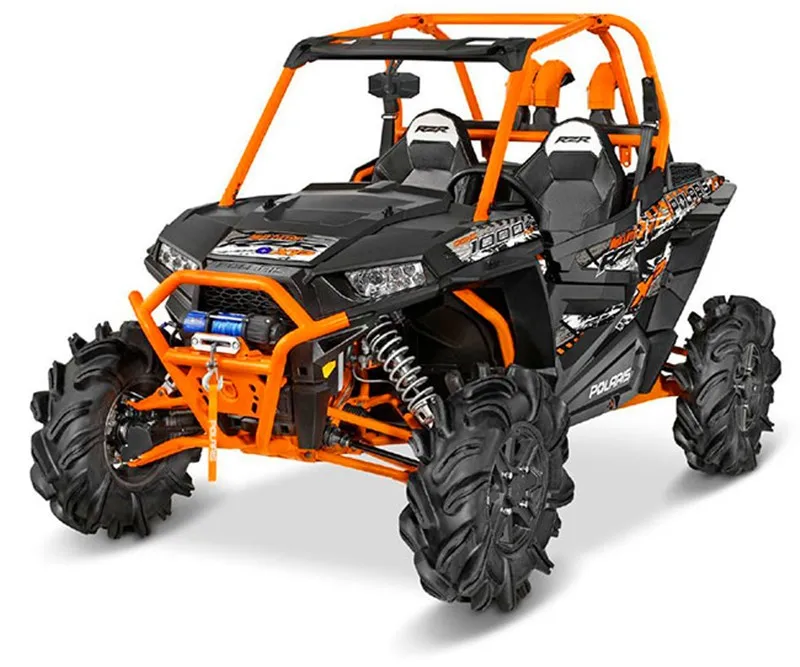 The rollers are pushed into the hub and grab it through pressure and friction.
The rollers are pushed into the hub and grab it through pressure and friction.
With the rollers wedged, the ring gear then transfers power to the hubs, axles, and wheels, thus providing four-wheel drive.
The rollers want to pop out of the sprague. When they get wedged in a peak, they squeeze the axle hubs with enough force to drive the front wheels.So what? Getting four-wheel drive isn’t anything special, and Can-Am’s Visco-Lok does it just fine. The difference comes in how each of these differentials lock. Locking your differential is the key to success in sketchy situations or on insane terrain.
Most UTV manufacturers provide an on-demand locking mechanism. Flip a switch on your dash and the front diff locks, providing you with tons of extra traction. When you get through the rough spot, just flip it off and keep going. You don’t want it locked all the time because it makes cornering tough, you have less control, and it puts extra stress on your differential.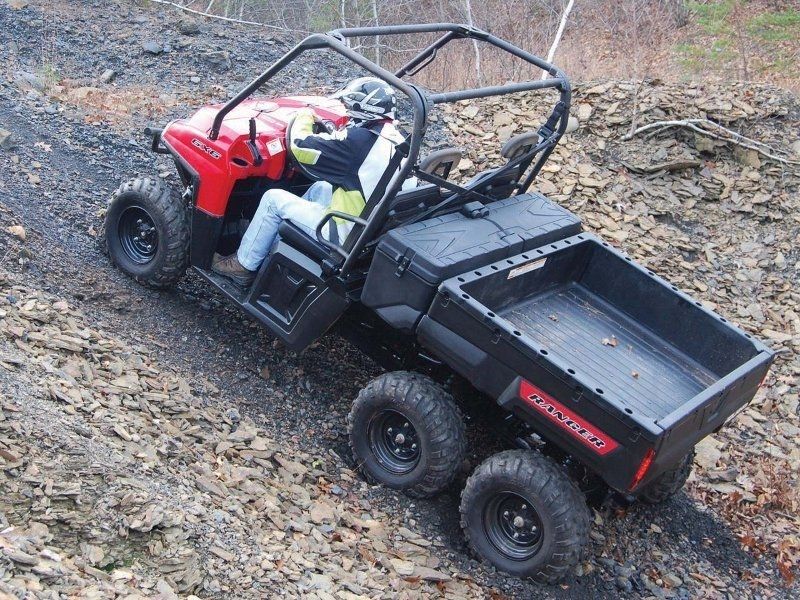
The other kind of front differential is the automatically locking differential. Polaris and Can-Am front diffs both fall into this category. These types of diffs lock automatically through a mechanical or electrical process. The trigger that causes these diffs to lock is slippage of a front wheel—these diffs are sometimes called limited slip differentials. But what sets Polaris apart from Can-Am is the way in which that slippage causes the lock to engage.
Can-Am’s Visco-Lok uses the slippage of a front axle to mechanically operate a pump. This pump adds pressure to a viscous fluid that compresses a clutch pack, which locks the differential via friction. This tends to be unreliable because the slipping front tire has to make one complete rotation or more before the diff locks.
Pictured is part of Can-Am’s Visco-Lok Differential. This differential uses the slippage of the front axle to mechanically operate a pump.Polaris’ diff is completely different. Remember, with 4WD engaged the ring gear uses the sprague and its rollers to turn both front axles.
Remember, with 4WD engaged the ring gear uses the sprague and its rollers to turn both front axles.
The front diff is geared lower than the transmission, which means the front axles have more torque and turn slower than the rear axles. If you’re driving on dry, flat ground with four-wheel drive engaged, the ring gear turns slower than the front axles, which are rolling the same speed as the rear axles. The rollers don’t get wedged and no power is transferred to the axles, which means no 4WD.
When you hit a tricky section and your back wheels start rotating faster than your front wheels, the ring gear wedges those rollers and your front wheels start rotating with power from the engine. You have four-wheel drive and your front diff is locked. The time it takes for it to engage and lock is almost instantaneous—the ring gear has to rotate only about 5 degrees.
Here‘s the really cool part. This engaging action can operate on each axle independently. So if you’re turning hard, your outside wheel will be moving fast and won’t engage, while your inside wheel will engage.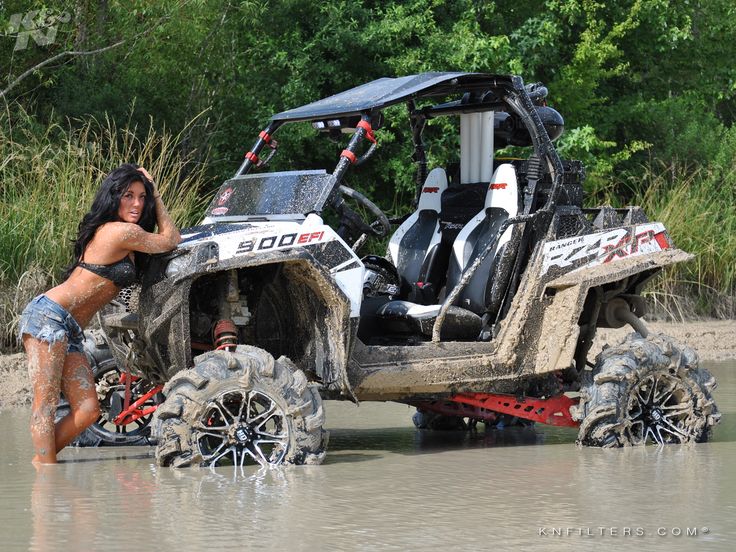 If you’re off camber in some crazy rock garden, a front tire hanging over open air will force the diff to lock instantly.
If you’re off camber in some crazy rock garden, a front tire hanging over open air will force the diff to lock instantly.
Any time a front wheel gets caught or slows down at all, the diff is there to give it power. That means it always gives you power exactly when you need it and doesn’t give it when you don’t.
At its heart, the Polaris front differential is a simple mechanism. The parts work together in complex ways but if you need to replace something or service something, you don’t have to be a professional mechanic to figure it out.
Can-Am’s Solution: The Smart-LokCan-Am now has a competing differential on the market. It’s the Smart-Lok Differential. It solves a lot of the problems that the Visco-Lok has by using an electronically actuating diff locking mechanism. That’s nothing special on its own, but Smart-Lok uses a network of sensors on your machine to automatically lock and unlock the front differential.
It knows your steering angle, your speed, and your individual wheel speeds, along with your set ride preference.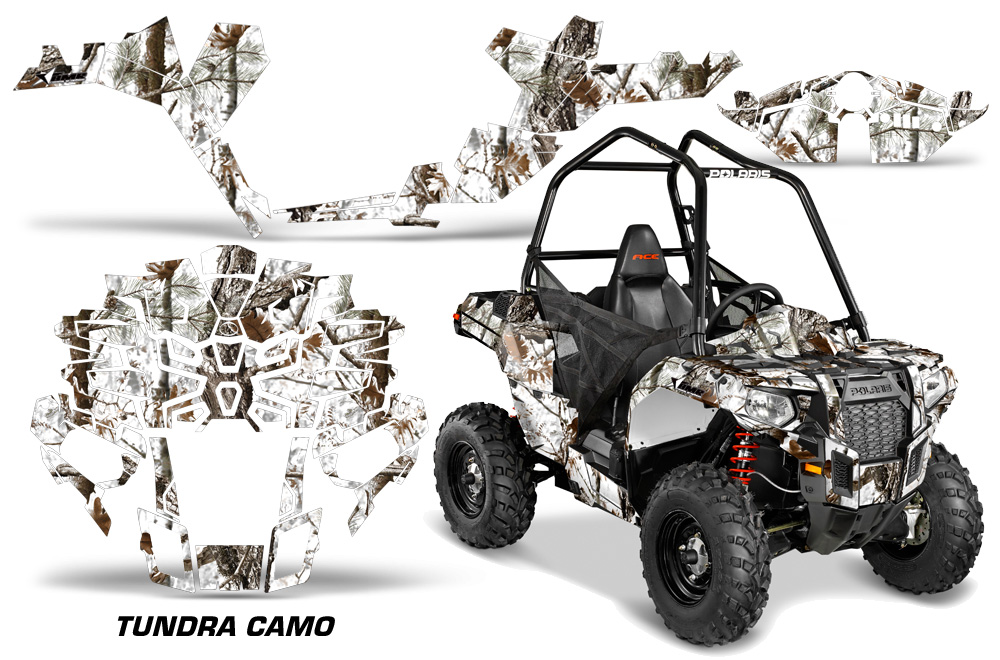 It then uses that information to lock and unlock the front diff on the fly. It’s cool, it’s innovative, and it works.
It then uses that information to lock and unlock the front diff on the fly. It’s cool, it’s innovative, and it works.
The main advantage that Smart-Lok has over Polaris’ diff is the same advantage that all on-demand locking diffs have over it: Polaris diffs don’t always do what you want them to on ice. If you’re sliding on a sheet of ice, your front diff will lock if you hit the gas at all, making it extremely difficult to gain control. Your best option is to turn off four-wheel drive entirely.
On-demand lockers like Smart-Lok let you keep your four-wheel drive without locking if you’re sliding on ice. That’s a much better setup to gain control in this instance.
Which Front Differential Is Right for You?Older Polaris machines tend to have some weaker parts in their diffs, which can lead to failure. Luckily there are lots of upgradable parts you can purchase for cheap (ahem) to get them up to snuff.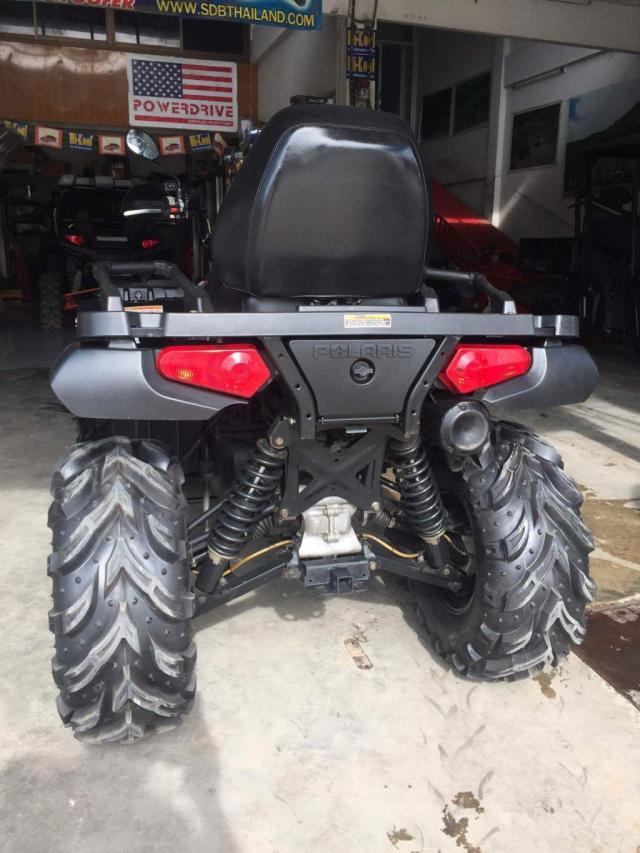 These days, new Polaris diffs are pretty solid. The only real changes they’ve made over the years have been to make them stronger and more reliable.
These days, new Polaris diffs are pretty solid. The only real changes they’ve made over the years have been to make them stronger and more reliable.
The problem is that it’s a brute force answer to Polaris’ simpler front diff. That means that right now, you can only get them in Can-Am’s highest-end Maverick X3s. If you’re not willing to drop $30K for a UTV, you’re stuck with Visco-Lok.
All that for performance that is, at best, a small improvement over Polaris’ age-old design that comes with every machine—whether you get a used RZR for $4,000 or a brand-new Turbo S for $30,000.
So, does Polaris have the perfect diff? You be the judge.
Polaris uses a mechanical “hilliard” system in the front differential to automatically select 4WD and also to apply locking to the front differential. The system can sense when more traction is required and it allows both automatic differential locking and auto 4WD selection on the fly.
Polaris has always called their four wheel drive system AWD it because when the back tires slip just a little bit it kicks power to ALL 4 tires not like a honda with it’s 3 wheel drive system!
How does a Polaris Sportsman front diff work?
With the rollers wedged, the ring gear then transfers power to the hubs, axles, and wheels thus providing four-wheel-drive! The rollers want to pop out of the sprague. When they get wedged in a peak, they squeeze the axle hubs with enough force to drive the front wheels.
The switch and its location vary based on model. The AWD switch on your Polaris RZR, RANGER or GENERAL has either two or three positions, depending on your model’s features. All switches have AWD and Two-Wheel Drive (2WD). The switch on models equipped with a lockable differential has a third position for turf mode.
Once rear wheel traction is regained, the front wheels return to an “over-running” condition and the rollers retract disconnecting the front axle from the front propshaft and you’re back in 2 wheel drive. Must Be Nice…the AWD function on the Polaris is a mechanical system and not tied into the speedometer.
Must Be Nice…the AWD function on the Polaris is a mechanical system and not tied into the speedometer.
Which is the AWD switch on a Polaris RZR?
The AWD switch on your Polaris RZR, RANGER or GENERAL has either two or three positions, depending on your model’s features. All switches have AWD and Two-Wheel Drive (2WD). The switch on models equipped with a lockable differential has a third position for turf mode. In turf mode, only one rear wheel is a drive wheel.
They replaced it (warranty from Polaris) and it still wont engage. The cluster shows emblem of 4wheel and the light is on the switch when i turn it on. The dealer doesnt seem to know what to do at this point? Is it under warrenty? I would demand the dealer fix it if so.
The All-Wheel Drive (AWD) switch on your Polaris RZR, RANGER or GENERAL has either two or three positions, depending on your model’s features. All switches have AWD and Two-Wheel Drive. The switch on models equipped with a lockable differential has a third position for turf mode. In turf mode, only one rear wheel is a drive wheel.
All switches have AWD and Two-Wheel Drive. The switch on models equipped with a lockable differential has a third position for turf mode. In turf mode, only one rear wheel is a drive wheel.
Why is my Polaris 4 wheel drive not working?
One of the issues is that the starter switch (red button) does not make a good connection. There are a few things going on with the starter switch cluster. If the switch isn’t just right, then the contact is not made, and a few things don’t work. The cooling fan, head light, and AWD are all in the same group.
If you look at the wiring harness that comes out of the AWD switch and runs along the handle there are 2 wires your looking for.
Could also start by changing the fluid. IT HAS TO BE polaris demand drive fluid so that the 4X4 can work correctly. Pull the hubs apart check if magnet is working, flatness of tab washers and inspect rollers inside the cage.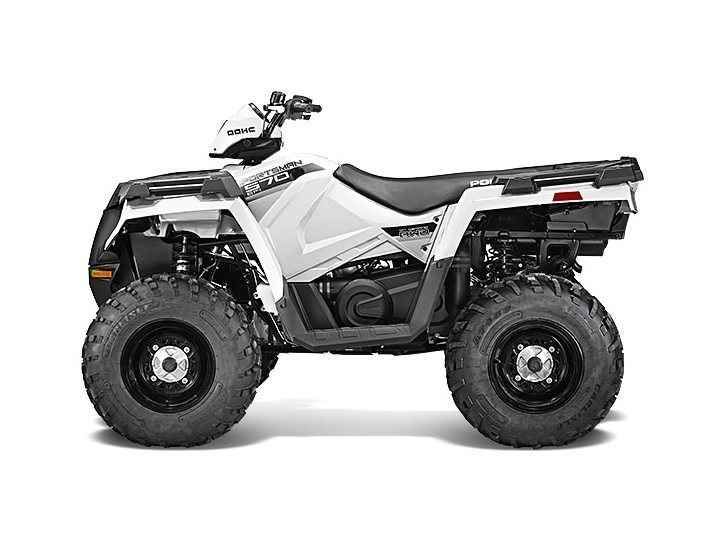 Polaris fluid is not necessary run a synthetic atf
Polaris fluid is not necessary run a synthetic atf
What to do if 4 wheel drive won’t engage?
If its pre 04.5 then change out the fluid in the hubs if its later then change out the fluid in the front differential. In the newer ones there is a fuse for the front diff that will cut out the 4×4 or at least there is one in my XP.
Author: Roman Zubko
With the approach of the long-awaited summer, our "test laboratory" more and more often receives equipment corresponding to the season. In early May, Brandt, the official distributor of Polaris, gave us a new product for 2006 for testing: the Polaris Sportsman X2 500 EFI ATV, the first two-seater model in the range of the American company.
It's not for nothing that this kind of machine is called "four-wheeled motorcycles". Bikes of the "Enduro" class are not at all distant, but the closest "relatives" of them. Energy-intensive long-stroke suspensions, high-torque engines, "toothy" tires with developed lugs allow them to easily move not only on broken and muddy dirt and forest roads, but also where instead of roads there are only directions.
Bikes of the "Enduro" class are not at all distant, but the closest "relatives" of them. Energy-intensive long-stroke suspensions, high-torque engines, "toothy" tires with developed lugs allow them to easily move not only on broken and muddy dirt and forest roads, but also where instead of roads there are only directions.
This technique, by the way, is very popular all over the world and year by year attracts more and more new fans. The secret of this phenomenon lies in its versatility. "Four-wheelers" (or, as they are also called, ATV - All-Terrain Vehicle) are capable of transporting goods, towing a trailer, and clearing snow in front of the house, if necessary. Well, with the help of a wide range of additional equipment, many of them easily turn almost into a mini-tractor: all-wheel drive allows a lot.
If you press the accelerator lever well, you can get real pleasure from driving. A motocross track is, perhaps, for a special subspecies of ATV, uncompromising racing models, but you can get through the forest paths and run around the surrounding fields to your heart's content even on utilitarian models.
The Sportsman X2 500 EFI is one of those versatile four-wheelers. In the model range of Polaris all-terrain vehicles, the Sportsman family is, in fact, separated into a separate class and occupies a niche between sports and utility models and represents a kind of symbiosis of the best qualities of representatives of both classes.
X2 - the first 2-seat model in the line (hence the name). Moreover, the rear seat back can be folded, and in this case, the rear trunk will increase slightly. By the way, partly for passenger safety reasons, the ATV was equipped not with the most powerful 800 cc, but with a 499 cc single-cylinder 4-stroke liquid-cooled engine with a capacity of 49 hp. With. Not enough? For the device with a dry weight of 362 kg - just right. If anyone has forgotten, until recently, other small cars were equipped with engines of similar power ...
Transmission - proprietary automatic V-belt variator PVT (Polaris Variable Transmission), interlocked with transfer case. The latter has a reduction gear with a gear ratio of 23.91:1. The gearbox is equipped with a reverse. Torque is transmitted to the wheels by cardan shafts; at the same time, the driver is at any time free to choose between all-wheel drive, 2x4 and automatic mode, when the 4x4 drive is activated independently if necessary.
The latter has a reduction gear with a gear ratio of 23.91:1. The gearbox is equipped with a reverse. Torque is transmitted to the wheels by cardan shafts; at the same time, the driver is at any time free to choose between all-wheel drive, 2x4 and automatic mode, when the 4x4 drive is activated independently if necessary.
Suspension apparatus can be safely called "automobile": McPherson struts in front and fully independent rear design. "Something is heard native", isn't it? Not every car, however, has suspension travel of up to 22 cm. Just as not every SUV is now equipped with a reduction gear transmission and manually connected all-wheel drive.
Well, we had to find out in the course of the test how this whole construct works in practice and how successful the compromise between sports and utilitarian qualities was found by the developers.
We decided to shoot and test rides near the village of Koltushi. We found a quiet picturesque corner: a couple of small lakes, a winding dirt road winding between them, sandy ravines and slopes, an almost flat field - there was where to relax from the heart and check our "Sportsman" in combat mode.
Device control is organized simply and intuitively. Starting the motor is electric, but just in case, a backup is provided (with a starter cord). Under the left hand is a handbrake and a dipped / high beam switch, under the right is a switch of drive modes and an accelerator lever under the thumb. Transmission modes are activated by a lever located on the right side of the device. It is a 5-position: H / L / N / R / P (respectively, "high gear", "low gear", "neutral", "reverse" and "parking").
At first glance, the ATV starts off with laziness: more precisely, with a second delay, necessary for the motor to spin up a little and “grab” the variator. But after - no "reflection". Gas - and the device "tear soles"! Moreover, having adapted, the traction force can be dosed very accurately: start smoothly, if there is loose sand, mud, clay under the wheels; or actively, with slippage, if you want to come off in full.
The Sportsman also reacts to the steering wheel without a second thought. Easily, without resting, enters turns, tenaciously holds the trajectory and accelerates powerfully at the exit. True, it rolls mercilessly at the same time: the suspensions are long-stroke, the center of gravity is located relatively high, and the overall height of the model, do not forget, is equal to its width. But if, while passing a turn, you lean inside the turn ahead of time, then all the creeps of the apparatus to tip over are stopped in the bud, and instead it begins to slide outward with its rear wheels, allowing, after a short training, to take turns in a spectacular slide.
Easily, without resting, enters turns, tenaciously holds the trajectory and accelerates powerfully at the exit. True, it rolls mercilessly at the same time: the suspensions are long-stroke, the center of gravity is located relatively high, and the overall height of the model, do not forget, is equal to its width. But if, while passing a turn, you lean inside the turn ahead of time, then all the creeps of the apparatus to tip over are stopped in the bud, and instead it begins to slide outward with its rear wheels, allowing, after a short training, to take turns in a spectacular slide.
While the photographer and I were choosing places and angles for shooting, we managed to check at the same time what it was like for the rear passenger on the "Sportsman". As it turned out, it’s quite good: the back seat is comfortable, the backrest is optimal in shape, there are also a couple of comfortable handles, very well located. Just before you go on a trip together, it would be useful to instruct the passenger so that when cornering, he, together with the driver, leans into the turn.
Well, what about X2's cross-country ability? There was no place to take "mud baths", but it was possible to check it in the sand. The Sportsman overcomes moderately steep climbs effortlessly - you don’t even need to turn on all-wheel drive, and even more so, downshift. Emboldened, and also realizing the remarkable capabilities of the device, I choose a steeper slope and decide to try to get out of a small ravine. There is dry sand under the wheels. I put the selector on the steering wheel in the "2x4" position, the lever - on "L". Go!
I start from a standstill and do not accelerate much in front of the slope to complicate the task. With a businesslike engine grumbling, the Sportsman confidently, without undue stress, drives up, requiring only a slight addition of gas at the very top of the climb. Shine!
The only fly in the ointment was found in the frequent switching modes of transmission and all-wheel drive: the low information content of the gearshift lever and the switch on the steering wheel was revealed. The efforts on them are somewhat unbalanced, and therefore the most common mistake when switching is to "jump" the desired position. For example, I often included "neutral" instead of "reverse" and automatic four-wheel drive instead of "2x4". Perhaps this is a matter of habit, but I did not manage to adapt during the test.
However, in all other respects the Polaris Sportsman X2 500 EFI showed its best side: excellent handling and cross-country ability, combat, "incendiary" character. It seems that it will suit the widest range of buyers: from summer residents to hunters and fishermen - in general, for lovers of outdoor activities. Behind the wheel of the Sportsman X2, he becomes very, very enjoyable.
ATV single
Articles / Practice Look into the kingpin: what is a kingpin suspension, how to maintain it and why to inject The word "pivot" today seems to someone as archaic as "zipun", "endova" and "batog". In fact, this is not so: the king pins have not left us yet, and it is likely that some will have to ... 381 four 0 07.10.2022
In fact, this is not so: the king pins have not left us yet, and it is likely that some will have to ... 381 four 0 07.10.2022
Articles / Used cars Along Route 60: The BMW 325i E36 Ownership Experience Getting a car from the cult road movie "Route 60" is not an easy task in our country. These are lengthy searches, and "parallel imports", and complex logistics, and years of painful waiting... 1418 6 5 06.10.2022
Articles / Used cars Range Rover Evoque I with mileage: stainless body, backward multimedia and weak electrics Range Rover SUVs have traditionally been big, voracious and even a little clunky. The release of the Evoque model broke all stereotypes about what a car of this British brand could be. But... 1960 one 2 05.10.2022
The release of the Evoque model broke all stereotypes about what a car of this British brand could be. But... 1960 one 2 05.10.2022
Test drives / Test drive Haval Dargo vs Mitsubishi Outlander: the dog is barking, the stranger is coming In the Haval dealership in the south of Moscow, life is in full swing: buyers look at cars, communicate with managers and sign some papers. While I was waiting for the test Dargo, the same cross... 12725 7 145 13.09.2022
Test drives / Test drive Motor from Mercedes, emblem from Renault, assembly from Dacia: test drive of the European Logan 1.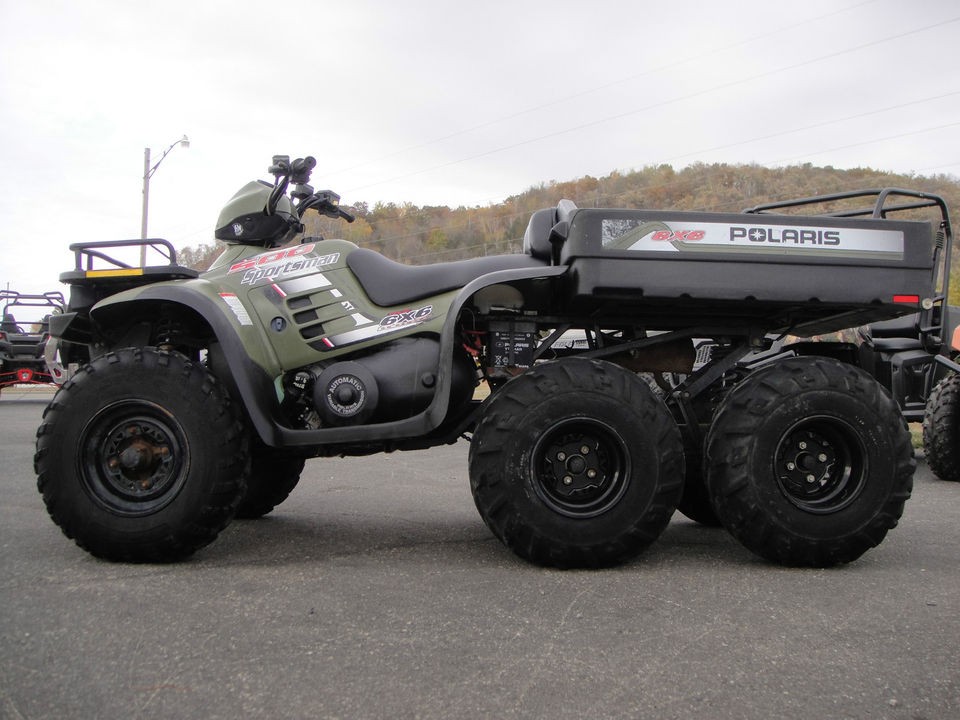 0 It would seem that what's new can be told about the second generation Renault Logan, known to every Russian taxi driver, as they say, up and down? However, this car has... 11159 ten 41 08/13/2022
0 It would seem that what's new can be told about the second generation Renault Logan, known to every Russian taxi driver, as they say, up and down? However, this car has... 11159 ten 41 08/13/2022
Test drives / Test drive Geely Coolray vs Haval Jolion: Free Cheese? If! Do you want to buy a car today with a full warranty, on credit at an adequate rate, without wild dealer markups? Now this is still a task, because a full-fledged chain of "representation - s... 8093 25 thirty 08/10/2022
The Polaris Ranger SP 570 ATV, beloved by many farmers, has not been seriously updated for 7 years.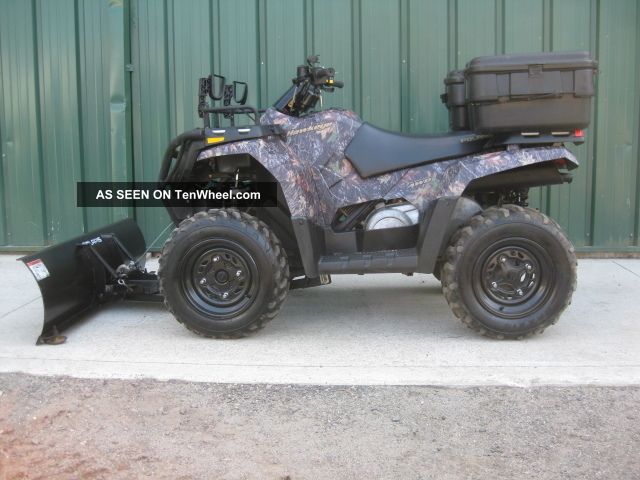 And now, in the 2022 lineup, its improved version has appeared.
And now, in the 2022 lineup, its improved version has appeared.
We will tell you exactly what has changed in the updated ATV.
The Polaris Ranger SP 570 is a long-standing (the first Ranger appeared back in 1997) line of two-seat drop-back cab ATVs. In addition to the SP 570 version, the Ranger line also includes models with a 500 cc engine (32 hp), and several liter versions.
The element of these all-terrain vehicles is the transportation of goods or long-distance expeditions, in which you need to take with you a large supply of food, tools or materials. These models are bought with pleasure by agricultural enterprises of any scale (from small family farms to huge agricultural holdings), construction sites, recreation centers, various forestry and fisheries, and, in principle, for driving with a load on bad roads or off-road.
The SP 570 models have 567cc, 44hp liquid-cooled engines with electronic fuel injection. These are simple and reliable 4-stroke single-cylinder engines, which were also installed on the previous version (Ranger 570 EFI), so there are no problems with them: these engines have already rolled thousands of kilometers with buyers from different countries. This means that any defects that could exist in them have long been identified and eliminated.
These are simple and reliable 4-stroke single-cylinder engines, which were also installed on the previous version (Ranger 570 EFI), so there are no problems with them: these engines have already rolled thousands of kilometers with buyers from different countries. This means that any defects that could exist in them have long been identified and eliminated.
The engine is paired with a standard automatic transmission with low and high forward gears, reverse, neutral, park gear and all-wheel drive.
Previous versions of the Ranger SP were focused on efficiency and usefulness, and in some places this even came at the expense of comfort. The owners of the equipment had to put up with hard seats and ascetic dashboards.
But this approach is a thing of the past: it will be possible to work on the new Ranger with comfort. The seats have become softer and more comfortable, and luggage compartments are hidden under them. On the tidy there is a deep thin pocket where a smartphone fits perfectly. The panel itself has become less deep - thanks to this, there is more room for the knees and for entry and exit.
The panel itself has become less deep - thanks to this, there is more room for the knees and for entry and exit.
The base version does not have a roof or doors, but it does have a tight door mesh that can be easily unfastened with one hand.
We've got to the fun part, the reason most buyers choose the Ranger SP: freight. Polaris engineers have left the old gas struts that tilt the body, but made a new rear wall handle - it has become larger and will be more convenient to open.
What's even more interesting is that the cargo space inside the body has increased by about 30%, mainly due to higher sides. First of all, an increase in depth is useful for those who carry bulk materials, firewood and building materials. And inside the body there are 5 compartments for buckets, and places for lumber.
Ranger SP 570 will be produced in three versions:
